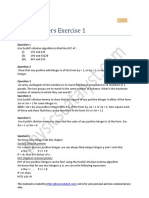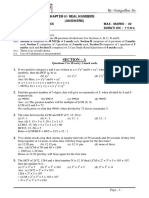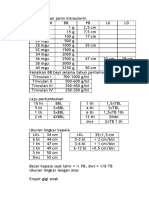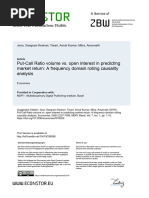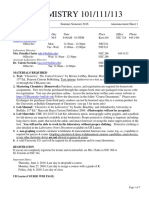Important Questions Class 10 Maths Chapter 1 Real Numbers 4
Important Questions Class 10 Maths Chapter 1 Real Numbers 4
Uploaded by
manishm1013Copyright:
Available Formats
Important Questions Class 10 Maths Chapter 1 Real Numbers 4
Important Questions Class 10 Maths Chapter 1 Real Numbers 4
Uploaded by
manishm1013Original Description:
Copyright
Available Formats
Share this document
Did you find this document useful?
Is this content inappropriate?
Copyright:
Available Formats
Important Questions Class 10 Maths Chapter 1 Real Numbers 4
Important Questions Class 10 Maths Chapter 1 Real Numbers 4
Uploaded by
manishm1013Copyright:
Available Formats
USE APP
Search for questions & chapters Search
Study Materials Important Questions
Important Questions for Class 10 Maths Chapter 1 Real Numbers
Important Questions for Class 10
Maths Chapter 1 Real Numbers
Table of Contents
Here are some important math questions for Class
10, Chapter 1 on real numbers. These questions
are designed to assist students in practicing
effectively for their CBSE Class 10 math exam
2022-23. All the additional questions provided
here align with the NCERT book, covering the
entire syllabus. They are aimed at boosting
students’ confidence and enhancing their problem-
solving abilities for the exams.
Fill Out the Form for Expert Academic
Guidance!
First Name Last Name
Grade Target Exam
--- JEE
+91 Phone number
Please indicate your interest
Live Classes Books
Test Series Self Learning
Language
---
Preferred time slot for Are you a Sri
the call Chaitanya student?
--- No
I agree to the terms and conditions and privacy
policy.
Get OTP
Also Check: CBSE Class 10 Maths Important
Question Chapter 8 Tribometry
What is Real Number?
Real numbers is a combination of rational and
irrational numbers. They are the numbers upon
which we easily perform mathematical operations.
All the numbers are not imaginary are real
numbers. For example, 33, -11, 7.99, 3/2, π(3.14),
√2, etc.
There are some question below:
Question 1. The decimal expansion of the
rational number 43
4 3
will terminate after how
2 5
many places of decimals? (2013)
Solution:
129
Question 2. Write the decimal form of
27 57 75
Solution: Non-terminating non-repeating.
Also Check: Important Questions for Class 10
Maths Chapter 14 Statistics
Question 3. Find the largest number that will
divide 398, 436 and 542 leaving remainders 7,
11, and 15 respectively.
Solution: Algorithm
398 – 7 = 391, 436 – 11 = 425, 542 – 15 = 527
HCF of 391, 425, 527 = 17
Question 4. Express 98 as a product of its
primes.
Solution:
2 × 72
Question 5. If the HCF of 408 and 1032 is
expressible in the form 1032 × 2 + 408 × p, then
find the value of p.
Solution:
HCF of 408 and 1032 is 24.
1032 × 2 + 408 × (p) = 24
408p = 24 – 2064
p = -5
Also Check: Surface Areas and Volumes Class
10 Extra Questions Maths Chapter 13
Real Numbers Class 10 Important
Questions Short Answer-I (2 Marks)
Question 6. HCF and LCM of two numbers is 9
and 459 respectively. If one of the numbers is
27, find the other number. (2012)
Solution:
We know,
1st number × 2nd number = HCF × LCM
27 × 2nd number = 9 × 459
2nd number = 9×459
27
= 153
Question 7. Find HCF and LCM of 13 and 17 by
prime factorisation method. (2013)
Solution:
13 = 1 × 13; 17 = 1 × 17
HCF = 1 and LCM = 13 × 17 = 221
Question 8. Find LCM of numbers whose
prime factorisation are expressible as 3 × 52
and 32 × 72. (2014)
Solution:
LCM (3 × 52, 32 × 72) = 32 × 52 × 72 = 9 × 25 × 49
= 11025
Also Check: Polynomials Class 10 Extra
Questions Maths Chapter 2
Question 9. Find the LCM of 96 and 360 by
using fundamental theorem of arithmetic.
(2012)
Solution:
96 = 25 × 3
360 = 23 × 32 × 5
LCM = 25 × 32 × 5 = 32 × 9 × 5 = 1440
Question 10. Find the HCF (865, 255) using
Euclid’s division lemma. (2013)
Solution:
865 > 255
865 = 255 × 3 + 100
255 = 100 × 2 + 55
100 = 55 × 1 + 45
55 = 45 × 1 + 10
45 = 10 × 4 + 5
10 = 5 × 2 + 0
The remainder is 0.
HCF = 5
255)865(3
つ
765
100)25572
200
55)100(1
55) 55 71
鶏4514
Le 40
ty
5)10(2
i
10
Question 11. Find the largest number which
divides 70 and 125 leaving remainder 5 and 8
respectively. (2015)
Solution:
It is given that on dividing 70 by the required
number, there is a remainder 5.
This means that 70 – 5 = 65 is exactly divisible by
the required number.
Similarly, 125 – 8 = 117 is also exactly divisible by
the required number.
65 = 5 × 13
117 = 32 × 13
HCF = 13
Required number = 13
Question 12. Find the prime factorisation of
the denominator of rational number expressed
¯ in simplest form. (2014)
as 6.12
Solution:
Let x = 6.12 ¯ …(i)
100x = 612.12 ¯ …(ii)
…[Multiplying both sides by 100] Subtracting (i)
from (ii),
99x = 606
x = 606
99
= 202
33
Denominator = 33
Prime factorisation = 3 × 11
Also Check: Some Applications of
Trigonometry Class 10 Extra Questions Maths
Chapter 9
Question 13. Complete the following factor
tree and find the composite number x. (2014)
Solution:
y = 5 × 13 = 65
x = 3 × 195 = 585
Question 14. Prove that 2 + 3√5 is an irrational
number. (2014)
Solution:
Let us assume, to the contrary, that 2 + 3√5 is
rational.
So that we can find integers a and b (b ≠ 0).
Such that 2 + 3√5 = ab , where a and b are
coprime.
Rearranging the above equation, we get
a 2
Since a and b are integers, we get 3b − 3
is
rational and so √5 is rational.
But this contradicts the fact that √5 is irrational.
So, we conclude that 2 + 3√5 is irrational.
Question 15. Show that 3√7 is an irrational
number. (2016)
Solution:
Let us assume, to the contrary, that 3√7 is rational.
That is, we can find coprime a and b (b ≠ 0) such
that 3√7 = ab
a
Rearranging, we get √7 = 3b
a
Since 3, a and b are integers, 3b is rational, and
so √7 is rational.
But this contradicts the fact that √7 is irrational.
So, we conclude that 3√7 is irrational.
Question 16. Explain why (17 × 5 × 11 × 3 × 2 +
2 × 11) is a composite number? (2015)
Solution:
17 × 5 × 11 × 3 × 2 + 2 × 11 …(i)
= 2 × 11 × (17 × 5 × 3 + 1)
= 2 × 11 × (255 + 1)
= 2 × 11 × 256
Number (i) is divisible by 2, 11 and 256, it has
more than 2 prime factors.
Therefore (17 × 5 × 11 × 3 × 2 + 2 × 11) is a
composite number.
Also Check: Important Questions Class 10
Maths Chapter 4 Quadratic Equations
Question 17. Check whether 4n can end with
the digit 0 for any natural number n. (2015)
Solution:
4n = (22)n = 22n
The only prime in the factorization of 4n is 2.
There is no other prime in the factorization of 4n =
22n
(By uniqueness of the Fundamental Theorem of
Arithmetic).
5 does not occur in the prime factorization of 4n for
any n.
Therefore, 4n does not end with the digit zero for
any natural number n.
Question 18. Can two numbers have 15 as
their HCF and 175 as their LCM? Give reasons.
(2017 OD)
Solution:
No, LCM = Product of the highest power of each
factor involved in the numbers.
HCF = Product of the smallest power of each
common factor.
We can conclude that LCM is always a multiple of
HCF, i.e., LCM = k × HCF
We are given that,
LCM = 175 and HCF = 15
175 = k × 15
11.67 = k
But in this case, LCM ≠ k × HCF
Therefore, two numbers cannot have LCM as 175
and HCF as 15.
Real Numbers Class 10 Important
Questions Short Answer-II (3 Marks)
Question 19. Prove that √5 is irrational and
hence show that 3 + √5 is also irrational. (2012)
Solution:
Let us assume, to the contrary, that √5 is rational.
So, we can find integers p and q (q ≠ 0), such that
p
√5 = q , where p and q are coprime.
Squaring both sides, we get
p2
5= 2
q
5q2 = p2 …(i)
5 divides p2
5 divides p
So, let p = 5r
Putting the value of p in (i), we get
5q2 = (5r)2
5q2 = 25r2
q2 = 5r2
5 divides q2
5 divides q
So, p and q have atleast 5 as a common factor.
But this contradicts the fact that p and q have no
common factor.
So, our assumption is wrong, is irrational.
√5 is irrational, 3 is a rational number.
So, we conclude that 3 + √5 is irrational.
Question 20. Prove that 3 + 2√3 is an irrational
number. (2014)
Solution:
Let us assume to the contrary, that 3 + 2√3 is
rational.
So that we can find integers a and b (b ≠ 0).
Such that 3 + 2√3 = ab , where a and b are
coprime.
Rearranging the equations, we get
a 3
Since a and b are integers, we get 2b − 2
is
rational and so √3 is rational.
But this contradicts the fact that √3 is irrational.
So we conclude that 3 + 2√3 is irrational.
Question 21. Three bells toll at intervals of 9,
12, 15 minutes respectively. If they start tolling
together, after what time will they next toll
together? (2013)
Solution:
9 = 32, 12 = 22 × 3, 15 = 3 × 5
LCM = 22 × 32 × 5 = 4 × 9 × 5 = 180 minutes or 3
hours
They will next toll together after 3 hours.
Question 22. Two tankers contain 850 liters
and 680 liters of petrol. Find the maximum
capacity of a container which can measure the
petrol of each tanker in the exact number of
times. (2012)
Solution:
To find the maximum capacity of a container which
can measure the petrol of each tanker in the exact
number of times, we find the HCF of 850 and 680.
850 = 2 × 52 × 17
680 = 23 × 5 × 17
HCF = 2 × 5 × 17 = 170
Maximum capacity of the container = 170 liters.
Question 23. The length, breadth, and height
of a room are 8 m 50 cm, 6 m 25 cm and 4 m 75
cm respectively. Find the length of the longest
rod that can measure the dimensions of the
room exactly. (2015)
Solution:
To find the length of the longest rod that can
measure the dimensions of the room exactly, we
have to find HCF.
L, Length = 8 m 50 cm = 850 cm = 21 × 52 × 17
B, Breadth = 6 m 25 cm = 625 cm = 54
H, Height = 4 m 75 cm = 475 cm = 52 × 19
HCF of L, B and H is 52 = 25 cm
Length of the longest rod = 25 cm
Question 24. Three alarm clocks ring at
intervals of 4, 12 and 20 minutes respectively.
If they start ringing together, after how much
time will they next ring together? (2015)
Solution:
To find the time when the clocks will next ring
together,
we have to find LCM of 4, 12 and 20 minutes.
4 = 22
12 = 22 × 3
20 = 22 × 5
LCM of 4, 12 and 20 = 22 × 3 × 5 = 60 minutes.
So, the clocks will ring together again after 60
minutes or one hour.
Question 25. In a school, there are two
Sections A and B of class X. There are 48
students in Section A and 60 students in
Section B. Determine the least number of
books required for the library of the school so
that the books can be distributed equally
among all students of each Section. (2017 OD)
Solution:
Since the books are to be distributed equally
among the students of Section A and Section B.
therefore, the number of books must be a multiple
of 48 as well as 60.
Hence, required number of books is the LCM of
48 and 60.
48 = 24 × 3
60 = 22 × 3 × 5
LCM = 24 × 3 × 5 = 16 × 15 = 240
Hence, required number of books is 240.
Question 26. By using Euclid’s algorithm, find
the largest number which divides 650 and
1170. (2017 OD)
Solution:
Given numbers are 650 and 1170.
1170 > 650
1170 = 650 × 1 + 520
650 = 520 × 1 + 130
520 = 130 × 4 + 0
HCF = 130
The required largest number is 130.
Question 27. Find the HCF of 255 and 867 by
Euclid’s division algorithm. (2014)
Solution:
867 is greater than 255. We apply the division
lemma to 867 and 255, to get
867 = 255 × 3 + 102
We continue the process till the remainder is zero
255 = 102 × 2 + 51
102 = 51 × 2 + 0, the remainder is zero.
HCF = 51
Question 28.Using Euclid’s division algorithm,
find whether the pair of numbers 847, 2160 are
coprime or not.
To find out the minimum (least) time when the
bells toll together next, we find the LCM of 9,
12, 15.
Solution:
Real Numbers Class 10 Important
Questions Long Answer (4 Marks)
Question 29. Prove that 3 + 2√5 is irrational.
(2012, 2017 D)
Solution:
Let us assume, to the contrary, that 3 + 2√5 is
rational
So that we can find integers a and b (b ≠ 0), such
that
3 + 2 √5 = a , where a and b are coprime.
b
Rearranging this equation, we get
Since a and b are integers, we get that a – 32 is
2b
rational and so √5 is rational.
But this contradicts the fact that √5 is irrational.
So we conclude that 3 + 2√5 is irrational.
Question 30. There are 104 students in class X
and 96 students in class IX in a school. In a
house examination, the students are to be
evenly seated in parallel rows such that no two
adjacent rows are of the same class. (2013)
(a) Find the maximum number of parallel rows
of each class for the seating arrange¬ment.
(b) Also, find the number of students of class
IX and also of class X in a row.
(c) What is the objective of the school
administration behind such an arrangement?
Solution:
104 = 23 × 13
96 = 25 × 3
HCF = 23 = 8
(a) Number of rows of students of class X = 104
8
=
13
Number maximum of rows class IX = 96
8
= 12
Total number of rows = 13 + 12 = 25
(b) No. of students of class IX in a row = 8
No. of students of class X in a row = 8
(c) The objective of school administration behind
such an arrangement is fair and clean
examination, so that no student can take help
from any other student of his/her class.
Question 31. Dudhnath has two vessels
containing 720 ml and 405 ml of milk
respectively. Milk from these containers is
poured into glasses of equal capacity to their
brim. Find the minimum number of glasses
that can be filled. (2014)
Solution:
1st vessel = 720 ml; 2nd vessel = 405 ml
We find the HCF of 720 and 405 to find the
maximum quantity of milk to be filled in one glass.
405 = 34 × 5
720 = 24 × 32 × 5
HCF = 32 × 5 = 45 ml = Capacity of glass
No. of glasses filled from 1st vessel = 720
45
= 16
No. of glasses filled from 2nd vessel = 405
45
=9
Total number of glasses = 25
Question 32. Amita, Sneha, and Raghav start
preparing cards for all persons of an old age
home. In order to complete one card, they take
10, 16 and 20 minutes respectively. If all of
them started together, after what time will they
start preparing a new card together? (2013)
Solution:
To find the earliest (least) time, they will start
preparing a new card together, we find the LCM of
10, 16 and 20.
10 = 2 × 5
16 = 24
20 = 22 × 5
LCM = 24 × 5 = 16 × 5 = 80 minutes
They will start preparing a new card together after
80 minutes.
Question 33. Find HCF of numbers 134791,
6341 and 6339 by Euclid’s division algorithm.
(2015)
Solution:
First, we find HCF of 6339 and 6341 by Euclid’s
division method.
Are you looking for some help?
CALL US
You might also like
- CWS 315 2I en StudentManual 4 5 Days v02Document600 pagesCWS 315 2I en StudentManual 4 5 Days v02Onurcan YahyaoğluNo ratings yet
- GRE - Quantitative Reasoning: QuickStudy Laminated Reference GuideFrom EverandGRE - Quantitative Reasoning: QuickStudy Laminated Reference GuideNo ratings yet
- Chapter 1 - Real NumbersDocument18 pagesChapter 1 - Real Numbersdeep_72No ratings yet
- real numbersDocument8 pagesreal numbersSHABILA RAAZULNo ratings yet
- Real Numbers Class 10 Important Questions Very Short AnswerDocument13 pagesReal Numbers Class 10 Important Questions Very Short AnswerDewesh SinghNo ratings yet
- Byjus Com Maths Important Questions Class 10 Maths Chapter 1 Real NumbersDocument15 pagesByjus Com Maths Important Questions Class 10 Maths Chapter 1 Real Numbersgd041098No ratings yet
- Imp - Real Numbers 1Document13 pagesImp - Real Numbers 1neelampbNo ratings yet
- 1720073181676_Ncert_Solutions_Class10_Maths_RealNumbersDocument10 pages1720073181676_Ncert_Solutions_Class10_Maths_RealNumbersjeevasarasu151No ratings yet
- Grade X CH 1: Real Numbers Practice QuestionsDocument8 pagesGrade X CH 1: Real Numbers Practice Questionsamulu amuluNo ratings yet
- Important Questions For Class 10 Maths by Padhai Ak Mazza 2024Document569 pagesImportant Questions For Class 10 Maths by Padhai Ak Mazza 2024velosityismygameNo ratings yet
- Real Numbers PYQDocument14 pagesReal Numbers PYQSiaNo ratings yet
- Real Numbers Chapter Wise Important Questions Class 10 MathematicsDocument20 pagesReal Numbers Chapter Wise Important Questions Class 10 MathematicsPrasad PillarisettiNo ratings yet
- Playing With NumbersDocument55 pagesPlaying With NumbersShreya GuheNo ratings yet
- A. GAT PPT (Dugassa)Document75 pagesA. GAT PPT (Dugassa)gamachistemesgen715No ratings yet
- Important Questions For Class 8 Maths Chapter 6 - Squares and Square RootsDocument1 pageImportant Questions For Class 8 Maths Chapter 6 - Squares and Square Rootsmanishm1013No ratings yet
- L 1 - 2 Solutions Ans KeyDocument12 pagesL 1 - 2 Solutions Ans KeyDiti ManiarNo ratings yet
- Solution:: Short Answer Type Question II (3 Marks)Document16 pagesSolution:: Short Answer Type Question II (3 Marks)rai venugopalNo ratings yet
- Excercise 1.2Document4 pagesExcercise 1.2navjotmaan932No ratings yet
- Tcs 1Document5 pagesTcs 1sapanaNo ratings yet
- Class - X Holidays HomeworkDocument6 pagesClass - X Holidays Homeworkdivubhai161No ratings yet
- Civil Service Exam Math - CSE PrepperDocument11 pagesCivil Service Exam Math - CSE PrepperAbzrijan Miguel100% (1)
- Number System - Session 2 OriginalDocument21 pagesNumber System - Session 2 OriginalPraveen KNo ratings yet
- Maths Class X Chapter 01 Real Numbers Practice Paper 01 Answers 3Document5 pagesMaths Class X Chapter 01 Real Numbers Practice Paper 01 Answers 3mayankmeena8209574454No ratings yet
- BBB 2021 Finals Primary 5 Set 2Document9 pagesBBB 2021 Finals Primary 5 Set 2Jathniel Gjurd Antojado100% (1)
- Cbse Notes Class 10 Maths - OkDocument98 pagesCbse Notes Class 10 Maths - Okknk3330% (1)
- SMC ExtendedDocument14 pagesSMC Extendedroblox guardNo ratings yet
- NCERT Solutions For Class 10 Math Chapter 1Document15 pagesNCERT Solutions For Class 10 Math Chapter 1KAYPEE MECHANICALNo ratings yet
- Exercise 1.1: CLASS - 10th Chapter - 1 (Real Numbers)Document24 pagesExercise 1.1: CLASS - 10th Chapter - 1 (Real Numbers)Payal ShuklaNo ratings yet
- Real NumbersDocument1,027 pagesReal Numbersdevarsh78No ratings yet
- Maths Class X Chapter 01 Real Numbers Practice Paper 01 Answers 3Document5 pagesMaths Class X Chapter 01 Real Numbers Practice Paper 01 Answers 3sandhiyar510No ratings yet
- NCERT Solutions Class X MathematicsDocument538 pagesNCERT Solutions Class X MathematicsROHIT K ANILNo ratings yet
- Class 10 Mathematis NCERT SolutionDocument609 pagesClass 10 Mathematis NCERT SolutionmirdulsahuNo ratings yet
- mock-MAMC8-solDocument12 pagesmock-MAMC8-solHIGGGGGsNo ratings yet
- Tricky QuestionsDocument5 pagesTricky QuestionsSajid AzfarNo ratings yet
- Class 10 Maths Full Book AnswersDocument680 pagesClass 10 Maths Full Book Answersguhabi0123No ratings yet
- MAT 01 WatermarkDocument18 pagesMAT 01 Watermarkyashkandpal3No ratings yet
- Untitled-document-2025-01-01T110650.053Document7 pagesUntitled-document-2025-01-01T110650.053tanmaysupalwar368No ratings yet
- Downloaded From Https://ncertbooks - Guru: Exercise 1.1Document22 pagesDownloaded From Https://ncertbooks - Guru: Exercise 1.1Naman AgnihotriNo ratings yet
- All Important Maths CH 1 Part 1Document26 pagesAll Important Maths CH 1 Part 1sneha vermaNo ratings yet
- Computation of Whole NumbersDocument3 pagesComputation of Whole NumbersFun and FitnessNo ratings yet
- Maths Paper - Whole No.,knowing Your Number, Play With NumbersDocument5 pagesMaths Paper - Whole No.,knowing Your Number, Play With NumbersNikhil JunejaNo ratings yet
- Logical Thinking, Arithmetic, and Number TheoryDocument11 pagesLogical Thinking, Arithmetic, and Number TheoryGil Deon BasaNo ratings yet
- FLT 07 A: Nswers and ExplanationsDocument16 pagesFLT 07 A: Nswers and ExplanationstorqtechNo ratings yet
- Teacher's Resource Material For Class X MathematicsDocument39 pagesTeacher's Resource Material For Class X MathematicsmaadheshNo ratings yet
- Maths Class X Chapter 01 Real Numbers Practice Paper 01 Answers 3Document5 pagesMaths Class X Chapter 01 Real Numbers Practice Paper 01 Answers 3Garda RaistarNo ratings yet
- RD Sharma Solution Class 9 Maths Chapter 1 Number System PDFDocument25 pagesRD Sharma Solution Class 9 Maths Chapter 1 Number System PDFSaravanan MariNo ratings yet
- Ans ch1Document5 pagesAns ch1monukumarrathi1981No ratings yet
- Teacher Ciph16Document4 pagesTeacher Ciph16Richard CaneNo ratings yet
- Decimals & FractionsDocument33 pagesDecimals & FractionsvighneshmanojNo ratings yet
- Ncert Solutions Class 10 Maths Chapter 1 Ex 1 2Document9 pagesNcert Solutions Class 10 Maths Chapter 1 Ex 1 2mohapatragitarani9No ratings yet
- class-10-chapter-1-maths-important-questionDocument6 pagesclass-10-chapter-1-maths-important-questionBaji Janjanam (CHANAKYA)No ratings yet
- Worksheet U-WaterlooDocument8 pagesWorksheet U-WaterlooGideon Eka DirgantaraNo ratings yet
- Combinatorics 8 Solutions UHSMCDocument5 pagesCombinatorics 8 Solutions UHSMCWalker KroubalkianNo ratings yet
- Ge112-Bsed-Science 1 - Diaz-Ps4Document7 pagesGe112-Bsed-Science 1 - Diaz-Ps4Danielle DiazNo ratings yet
- CLASS X 1. Real Numbers 2021 22Document67 pagesCLASS X 1. Real Numbers 2021 22ASB ROCKSNo ratings yet
- MTAPGrade 6 TEAM ORAL With SolutionsDocument4 pagesMTAPGrade 6 TEAM ORAL With Solutionsmikee_tej94% (110)
- GCSE Mathematics Numerical Crosswords Higher Tier Written for the GCSE 9-1 CourseFrom EverandGCSE Mathematics Numerical Crosswords Higher Tier Written for the GCSE 9-1 CourseNo ratings yet
- DR Seuss Oh The Places You'll Go MaterialsDocument7 pagesDR Seuss Oh The Places You'll Go Materialswest woodNo ratings yet
- Tabel Pocket BookDocument56 pagesTabel Pocket Bookanon_135429199No ratings yet
- Indian Railway ReservationDocument64 pagesIndian Railway ReservationVicky SinghNo ratings yet
- Engineers: ROUTER-is The Glue That Holds Your HomeDocument1 pageEngineers: ROUTER-is The Glue That Holds Your HomerheabelleNo ratings yet
- English Project (Exporation)Document11 pagesEnglish Project (Exporation)oke kar maungNo ratings yet
- Module 11 - Mechanical WavesDocument32 pagesModule 11 - Mechanical WavesJorge Jr DelgadoNo ratings yet
- Infiniti 2.0-Liter Vc-Turbo Engine: World First PowerDocument1 pageInfiniti 2.0-Liter Vc-Turbo Engine: World First PowerNguyen ThaiNo ratings yet
- Economies 07 00024 v2Document11 pagesEconomies 07 00024 v2Sushant YadavNo ratings yet
- Machine Learning Concepts With Python and The Jupyter Notebook Environment: Using Tensorflow 2.0 Nikita SilaparasettyDocument62 pagesMachine Learning Concepts With Python and The Jupyter Notebook Environment: Using Tensorflow 2.0 Nikita Silaparasettypampoulekote75% (4)
- Es 103 - Module 7 - Torsion of Thin Walled Tubes - Helical SpringDocument36 pagesEs 103 - Module 7 - Torsion of Thin Walled Tubes - Helical Springyrbbwababa05No ratings yet
- Week 1 - Introduction To Consumer Behaviour - TRI 3 2022Document80 pagesWeek 1 - Introduction To Consumer Behaviour - TRI 3 2022Onur SerbestNo ratings yet
- Adil C VDocument2 pagesAdil C VAdil ShahzadNo ratings yet
- Epilogue To A Vision'Document5 pagesEpilogue To A Vision'papagalleonNo ratings yet
- HydroxyzineDocument3 pagesHydroxyzineapi-3797941100% (2)
- Siglas Usadas em Esquemas EletricosDocument4 pagesSiglas Usadas em Esquemas EletricosRafael MarquesNo ratings yet
- Sexual EthicsDocument4 pagesSexual EthicsmargelynmijaresNo ratings yet
- Ent300 Chap3Document37 pagesEnt300 Chap3UMMINo ratings yet
- Train Borne ATP GuideDocument12 pagesTrain Borne ATP Guidevineet_k_signalNo ratings yet
- Electronica - 2da - Edicion - Allan - R - Hambley SolutionDocument562 pagesElectronica - 2da - Edicion - Allan - R - Hambley SolutionEVANS OTERO100% (1)
- Developments in HydroformingDocument9 pagesDevelopments in HydroformingkevinNo ratings yet
- Iecex Tsa 06.0009Document6 pagesIecex Tsa 06.0009Francesco_CNo ratings yet
- Attendance:: What Are You Most Proud About Being A Filipino?Document12 pagesAttendance:: What Are You Most Proud About Being A Filipino?Rm LiNo ratings yet
- Negotiation With Difficult PeopleDocument20 pagesNegotiation With Difficult PeopleMikaela100% (1)
- Gesture Language Translator Using Raspberry PiDocument7 pagesGesture Language Translator Using Raspberry PiIJRASETPublicationsNo ratings yet
- Syllabus of Basic ChemDocument7 pagesSyllabus of Basic ChemElsa Try Julita SembiringNo ratings yet
- YfgkDocument33 pagesYfgkKian LuNo ratings yet
- Ezekiel and The LandDocument29 pagesEzekiel and The Landloveland22No ratings yet
- EANM SNMMI Renal Scintigraphy Final For ReviewDocument31 pagesEANM SNMMI Renal Scintigraphy Final For Reviewtri utamiNo ratings yet
- 'Dreamtime' and 'The Dreaming'Document8 pages'Dreamtime' and 'The Dreaming'talia roweNo ratings yet






































